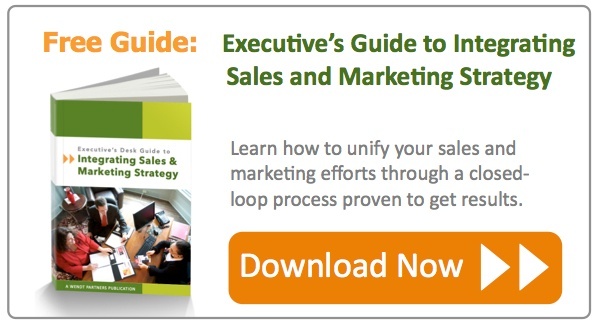What Every CEO Needs to Know about Competitive Intelligence

In today's marketplace, developing an effective strategy to respond to changes in the competitive environment is one of the most critical challenges facing many companies. A powerful tool that can be used to overcome this is competitive intelligence (CI). While there are many practices and techniques associated with performing market and business research, CI is a formally structured professional approach that achieves consistent, usable results. We asked Rhonda Kleiman, founder of the Rhonda Kleiman Group LLC, to share with us her insights on competitive intelligence strategy for CEOs.
WP: What, in a nutshell, is competitive intelligence?
RK: Competitive intelligence, or CI, is gathering information, analyzing it, and most importantly, acting on it to your strategic advantage. It is a decision-support system that can serve to minimize risk or act as an early warning system. Information is gathered from primary and secondary sources and utilizes both people and published information. It does not use spying, dumpster diving or any other illegal means of gathering information. CI practitioners go about this in an ethical manner and adhere to the Strategic and Competitive Intelligence Professionals (SCIP) Code of Ethics. Some organizations use this code as a starting point to create their own policies. CI is different than BI or business research. While research is a key component, CI goes way beyond fact finding to the analysis, to what is driving the client’s need and to the objectives of the project.
WP: Can you describe some examples of situations where a CEO should definitely utilize competitive intelligence in making key decisions?
RK: Some situations would be when the organization is looking at investing a large sum of money to develop a new product or service, going into new markets, proving or disproving rumors circulating about something a competitor might be up to, leveraging the existing customer base, supporting possible merger or acquisition activity, or adjusting/adapting to the current economic climate
WP: I've heard the phrase "Go beyond Google". What does that mean - i.e., what kinds of databases and tools are available beyond Google and other public search engines?
RK: There are numerous specialized databases and web sites that make up the hidden or invisible web, a term used to describe all of the information available on the World Wide Web that cannot be found by using general-purpose search engines. Not all pages are indexed and data that is not hyperlinked is not accessible to web crawlers. As much information as there is on Google and other search engines, it is still just a fraction of all of the available information that can be tapped into. Some examples would be subscription databases such as EBSCO or ProQuest, where an organization pays a licensing fee to access the data. Paid subscriber content to newspapers, trade publications, newsletters, regional business journals, trade associations would be another. Government websites such as U.S. Census, Bureau of Labor Statistics, U.S. Patent & Trademarks, while free to search, are made up of databases that require the searcher to drill down through many layers of search menu options in order to arrive at a specific piece of data or statistic. These resources are published by respected companies, are authoritative, current, objective, and are organized and indexed in ways that allow for precision searching.
WP: Can you provide an overview of what goes into becoming a competitive intelligence professional? What things do you learn about and what business skills do you develop?
RK: Competitive intelligence practitioners come from many different professional walks of life such as former CIA operatives, military, government, market researchers, librarians, etc. Many practitioners have an MBA or journalism skills. Other skills identified with CI practitioners are: good financial background, communication skills, information “geek,” analytical, detail oriented, sense of curiosity, big picture thinker.
If you are a CEO in a small company and do not have dedicated staff to perform CI, you should learn how to navigate the invisible web. Numerous studies in the past have shown that many CEOs performing their own information searches on Google are skeptical of some of the information in the search results and don’t trust it, but that it is “better than nothing.” However, “better than nothing” is not good enough when using information to make costly business decisions. Learn the industry you are in and become familiar with your industry’s sources and what you can trust. Learn how to properly ask/frame/define questions. Get to know key people in the departments you will be working with in your organization and develop a good network of outside contacts. CI courses and programs are offered at some colleges and universities.
Fuld & Company offers a CI certification program and SCIP, Strategic and Competitive Intelligence Professionals, is in the process of developing one as well. The CI Division of SLA, Special Libraries Association also offers a variety of learning opportunities.
WP: How can CEOs incorporate competitive intelligence into the regular strategic planning and growth models for their companies?
RK: Competitive intelligence should be an ongoing process in an organization. You must have cooperation or buy-in from management because they are your clients and they should be actively involved in order to make this work successfully. You need to educate them. You need to interview management about their needs at the start of the process and instead of just asking “what,” you should ask “why,” do you need this. KIT (Key Intelligence Topics) interviews should be incorporated into the CI process. It is the first step in the CI process and is used to help identify user needs. In this process you are continually coming up with KITs as new client needs arise.
WP: Within a business, who other than the CEO should 'own' competitive intelligence? Is this primarily a marketing function? A financial or accounting department function? Etc.?
RK: Many large companies have a dedicated CI department. Some companies have a CI function that is a one-person operation. Other departments or job functions that “own” CI are strategic planning, marketing, market research, research & development, sales, finance, or the corporate information center.
WP: What does a competitive intelligence process usually look like? In other words, what does a company need to prepare in order to have a successful competitive intelligence or engagement?
RK: The process starts out with good planning and interviewing the person or department that needs the intelligence. Next, you work on both primary and secondary research, using published resources and in many cases, making phone calls to industry analysts and experts, journalists, competitors, etc. Once all of the information is gathered it needs to be analyzed. Upon completion of the analysis the last step is the delivery of finished product. A few of the many tools that can be used throughout this process are SWOT analysis, war games, scenario planning, and Michael Porter’s Five Forces.
WP: What are some of the common or leading outcomes that companies experience from utilizing competitive intelligence?
RK: Since one of the main goals of CI is to support the decision making process, if that process is strengthened as a result, this would be a positive outcome. Other outcomes could be that management and other internal customers in the organization gain a better understanding and appreciation of the CI process, financial value is realized through increased sales, cost reductions, etc., new markets are successfully entered.
Image Credit: kdooley @ Flickr (Creative Commons)


